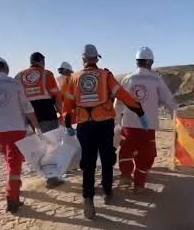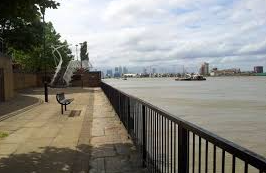
A rapid rebel offensive has taken control of key areas in Aleppo, putting pressure on Bashar al-Assad’s regime.
The sudden advance of rebel forces in Aleppo has shocked both the Assad regime and its allies, marking a dramatic shift in the ongoing Syrian civil war. Led by the jihadist faction Hayat Tahrir al-Sham (HTS), the offensive, which began on Wednesday, has seen rebel groups swiftly capture a military base and numerous villages in north-western Aleppo. This surprise attack has led to fears of a major escalation in the region.
HTS, which has previously been one of the most formidable forces in Syria’s rebel factions, has now cut off the vital highway between Damascus and Aleppo. As a result, Russia, a key ally of the Assad regime, launched airstrikes in retaliation. By the end of the week, HTS fighters had reached the outskirts of Aleppo and, by Sunday, had seemingly seized control of much of the city. The Assad military has been rushing reinforcements, while heavy airstrikes continue to target rebel-held areas.
A Recap of Syria’s Civil War
The conflict in Syria, which began in 2011 with peaceful protests against President Bashar al-Assad, escalated into a full-scale civil war after the regime’s brutal crackdown on demonstrators. Over time, this conflict evolved into a fractured war, with numerous rebel groups, each with different agendas, fighting for control. While some factions were initially motivated by democratic ideals, others, like HTS, emerged as powerful jihadist forces, often with ties to al-Qaeda and other extremist groups.
The war has caused catastrophic damage: half a million people have died, and almost 7 million have fled the country. Though Assad’s regime has regained control of much of Syria, thanks to support from Russia and Iran, the conflict has never truly ended, with pockets of rebellion still present, particularly in the north-west.
In recent years, a fragile ceasefire brokered by Russia and Turkey in 2020 had maintained a relative calm in the Idlib region, but that is now being tested by this new offensive.
Why Is the Conflict Resurging Now?
Experts believe HTS has been preparing for this move for months. In the autumn, there were reports of large-scale military exercises, and speculation about an impending operation. HTS’s forces are reportedly more organised and professional than in previous years, with new military colleges and complete control over their strongholds.
Another critical factor is the shifting geopolitical landscape. Assad’s allies, particularly Hezbollah, have been weakened by the ongoing conflict with Israel in Lebanon. Russia, which has long been a major player in the region, is heavily involved in the war in Ukraine, limiting its ability to support Assad. Additionally, Israel has ramped up airstrikes against Iranian forces in Syria, further distracting Assad’s support base.
Given these shifting dynamics, the rebels may have seen a narrow window of opportunity to strike, especially as the Syrian and Russian airstrikes against rebel areas seemed to signal a possible broader military campaign. The timing of the attack also coincided with a ceasefire in Lebanon, adding to the sense of urgency.
Who Are Hay’at Tahrir al-Sham?
HTS, which was founded by Abu Muhammad al-Jolani, has evolved from being part of the al-Qaeda-affiliated Jabhat al-Nusra group into one of Syria’s most powerful rebel factions. Today, HTS controls Idlib, where around 4 million people live, and commands an estimated 30,000 fighters. Despite being designated a terrorist organisation by the US, HTS has received backing from Turkey, although it is not believed to have global ambitions like ISIS.
While HTS controls large swaths of territory in the north-west, it faces ongoing criticism for its harsh rule, including accusations of human rights abuses such as executions and oppressive punishments for perceived blasphemy or adultery.
Assad’s Likely Response
Though HTS has made rapid gains, it is unclear how long the momentum will last. Assad’s forces have a history of responding to setbacks with regrouping and counterattacks. Experts predict that he may apply his previous tactics: withdrawing, fortifying positions, and launching a counteroffensive. Russia’s continued airstrikes and the consolidation of regime forces in Hama are expected to put considerable pressure on the rebel forces in the coming days.
There is concern among many that Assad may resort to chemical weapons, as he did in the past, to break the stalemate and regain control of key areas. If that happens, the consequences for the rebels could be catastrophic.
What’s at Stake?
This unexpected escalation has raised questions about the future of the Syrian conflict. The rebels, especially HTS, are seizing an unprecedented opportunity to challenge the Assad regime, while Assad’s allies are distracted or stretched thin. The coming weeks could determine whether this new phase of the war will result in another shift in the balance of power in Syria. Negotiations between Russia and Turkey, as well as Assad’s own military strategies, will likely play a pivotal role in shaping the outcome.










